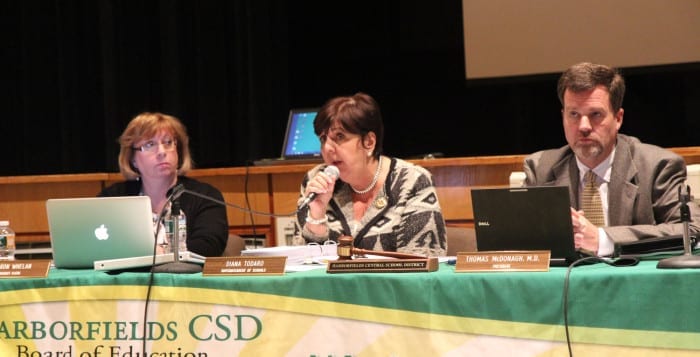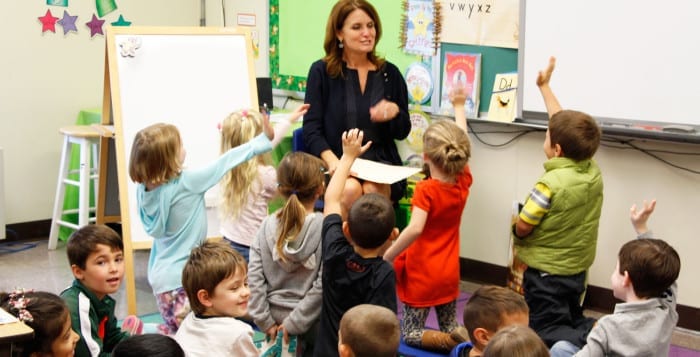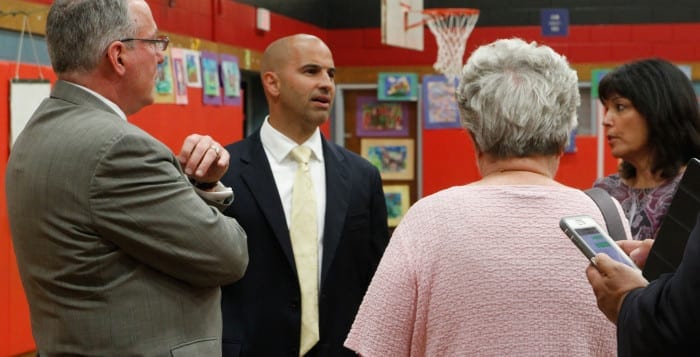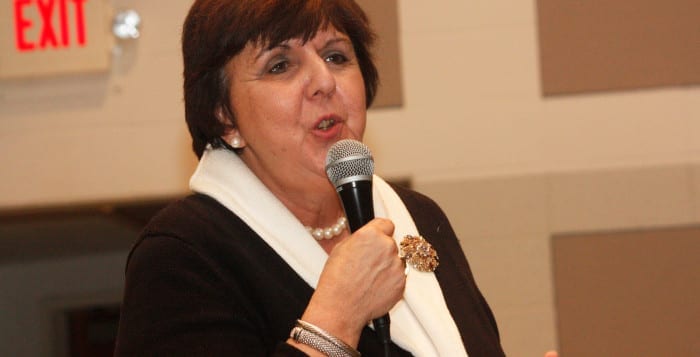Tuesday night was a success for school districts in the Huntington area, with all budgets approved, including Harborfields’ cap-piercing $82.8 million budget.
Throughout budget season, Assistant Superintendent for Administration and Human Resources Franceso Ianni had presented the board with several options for the 2016-17 budget. Some stayed within the 0.37 percent state–mandated tax levy cap, but did not offer programs the community had been asking for, like full-day kindergarten. Others included such programs but went above and beyond the cap. After much debate, the board adopted a nearly $83 million budget with a cap-busting 1.52 percent increase to the tax levy.
Among the costs in the budget are $600,000 for full-day kindergarten, $70,000 for a BOCES cultural arts program, $52,000 for a third-grade orchestra program and $120,000 for an additional special education teacher and two teaching assistants.
Harborfields residents have been vocal about wanting full-day kindergarten on the budget and one group, Fair Start: Harborfields Residents for Full-Day Kindergarten, traveled to Albany to seek help from state legislators on making it possible.
Rachael Risinger, a member of Fair Start, said she and the organization are elated to see a budget pass with full-day kindergarten on the menu.
“We are extremely thankful the Harborfields community came together to pass this year’s school budget,” she said in an email. “Kindergarten orientation was this week and we’ve heard from so many parents how excited their young kids are to go to full-day kindergarten starting in September. Now they will have the same fair start as every kindergarten student on Long Island.”
The district needed a 60 percent supermajority to override the cap in its budget, and with 2,099 votes in favor and 1,017 votes against, the supermajority was achieved.
Superintendent Diana Todaro said she is pleased with the outcome.
“It’s a budget that supports and meets the needs of all of our children, from kindergarten through the high school,” she said. “We just want to thank our community, parents, staff members and especially the board of education who supported us throughout this entire process.”
Ianni, who will be taking over for Todaro in 2017 as superintendent, said he is excited to work with the programs in this budget next year. “I’m very exited and pleased for the students and the community, [for] all the programs that we’re going to have,” he said. “I’m really excited [to go] into the new school year as the new superintendent in January, [with] these kinds of programs in place.”
Incumbent Hansen Lee and newcomer Colleen Wolcott were also voted in as school board members for the upcoming year, with 1,569 and 1,301 votes, respectively.
“I am extremely excited about the passing of this historic budget, and how the community came together for all of our kids,” Lee said. “[And] I am excited about my second term and [am] looking forward to more exciting things to come at Harborfields.”
Wolcott said she is eager to get started.
“I’m very excited to serve my community more than I have already been doing,” she said. “It is my honor. I’m excited to have a voice on the board of education and to work collaboratively with the district to make it better than it already is.”
Challengers Chris Kelly (1,001 votes), Marge Acosta (992 votes) and Joseph Savaglio (571 votes) fell short in their own bids.









